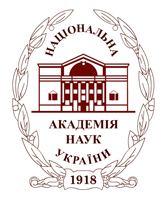 bv.nbuv.gov.ua
bv.nbuv.gov.ua
ISSN 1029-7200 (print)
ISSN 2948-0183 (online)
Bibliotechnyi visnyk
ARCHIVE (All issues) / ![]() Content (2021, Issue 1)
Content (2021, Issue 1)![]()
![]()
Kubko Anastasiia Scientometric Dimensions of Epidemic. Part Two. Adjustments Made by the PandemicAbstract: Actuality. Epidemics, due to their tendency to make a heavy scientific impact on the medical industry, for several decades have allowed the specialists in bibliometrics and scientometrics to identify and evaluate not only the trends of "everyday", routine work of scientists and scientific organizations, but also the dynamics caused by stress. The aim of actual paper is to identify, summarize and compare trends in the stress dynamics of bibliometrics and scientometrics indicators using the results of foreign studies of epidemics of the pre-COVID-19 era and actual pandemic of coronavirus disease COVID-19. Results of global researches of H1N1 influenza A epidemics, Ebola and Zika virus diseases, SARS and MERS diseases that occurred in the period from 1996 to 2018, revealed the peculiarities of the rate of publication activity of certain scientists and institutions; the intra-industry distribution of publishing activity; the increase of publishing activity on relevant topics - both permanent and temporary; the dominance of certain medical fields sectors (health care sector) with a focus on publications on health and epidemic safety; the identification of the leading institutions that responded most actively to the epidemic, first of all - the US Centers for Disease Control and Prevention, WHO and the Chinese Government Center for Disease Control and Prevention. There were also some shortcomings of the obtained material (and, accordingly, trends based on it) associated with the lack of pandemic nature of pre-COVID-19 era epidemics, and with the response of not the world medical scientific community, but rather the scientific community of the most affected regions, which limited their value as a model for the universal pattern of academic society’s response to stress. Conclusions. At the same time, the current pandemic of coronavirus disease COVID-19 makes it more likely to clarify existing trends. Thus, only the materials of the first half of 2020 confirmed the trends of dramatical growth of number of publications even during, and not after the critical challenge; the intra-industry distribution of publications with an emphasis on the issues of sanitary and epidemiological safety (health care); and revealed the new trends: the ineffectiveness of standard search methods in the context of ultra-fast publishing, with Dimensions and Google Scholar taking the lead as the platforms that best represent publishing activity, as they index documents not published in journals as well, including preprints; and the association, in the short term, between the number of citations and the fact of publishing on a social networks. The last two trends lay the empirical foundation for studying the question of the role of representation and popularity of a scientist on social networks in the bibliometric success of his work, as well as the possible connection of PR-technologies with bibliometric indicators. Keywords: scientometrics, bibliometric indicators, medicine, COVID-19. Author(s) citation:
Cite: References:
|